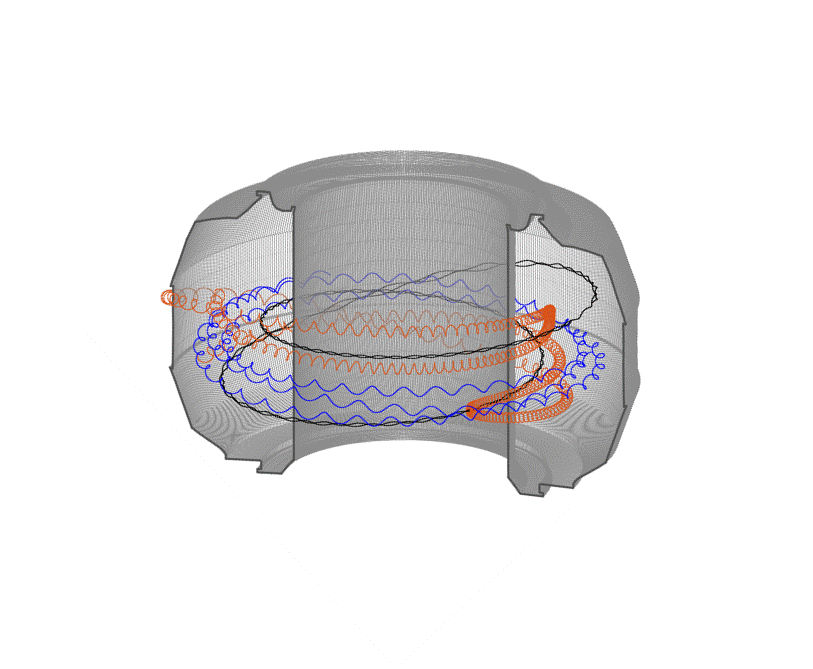
Filter News
Area of Research
- Advanced Manufacturing (5)
- Biology and Environment (32)
- Clean Energy (93)
- Climate and Environmental Systems (1)
- Computational Biology (1)
- Computational Engineering (3)
- Computer Science (5)
- Electricity and Smart Grid (1)
- Fusion and Fission (11)
- Fusion Energy (8)
- Isotopes (1)
- Materials (57)
- Materials for Computing (6)
- Mathematics (1)
- National Security (14)
- Neutron Science (65)
- Nuclear Science and Technology (7)
- Quantum information Science (1)
- Sensors and Controls (1)
- Supercomputing (37)
- Transportation Systems (2)
News Type
News Topics
- (-) Climate Change (44)
- (-) Composites (19)
- (-) Fusion (23)
- (-) Grid (36)
- (-) Machine Learning (24)
- (-) Molten Salt (7)
- (-) Neutron Science (76)
- (-) Physics (28)
- (-) Summit (27)
- (-) Transportation (60)
- 3-D Printing/Advanced Manufacturing (74)
- Advanced Reactors (23)
- Artificial Intelligence (44)
- Big Data (24)
- Bioenergy (39)
- Biology (39)
- Biomedical (28)
- Biotechnology (10)
- Buildings (32)
- Chemical Sciences (38)
- Clean Water (15)
- Computer Science (98)
- Coronavirus (28)
- Critical Materials (23)
- Cybersecurity (20)
- Decarbonization (28)
- Education (3)
- Element Discovery (1)
- Energy Storage (73)
- Environment (79)
- Exascale Computing (10)
- Fossil Energy (2)
- Frontier (16)
- High-Performance Computing (39)
- Hydropower (6)
- Irradiation (2)
- Isotopes (23)
- ITER (5)
- Materials (92)
- Materials Science (84)
- Mathematics (2)
- Mercury (5)
- Microelectronics (1)
- Microscopy (27)
- Nanotechnology (38)
- National Security (21)
- Net Zero (5)
- Nuclear Energy (45)
- Partnerships (29)
- Polymers (21)
- Quantum Computing (13)
- Quantum Science (36)
- Renewable Energy (1)
- Security (12)
- Simulation (15)
- Space Exploration (13)
- Statistics (2)
- Sustainable Energy (75)
- Transformational Challenge Reactor (4)
Media Contacts
Physicists turned to the “doubly magic” tin isotope Sn-132, colliding it with a target at Oak Ridge National Laboratory to assess its properties as it lost a neutron to become Sn-131.

Oak Ridge National Laboratory scientists have devised a method to control the heating and cooling systems of a large network of buildings for power grid stability—all while ensuring the comfort of occupants.

Three researchers from the Department of Energy’s Oak Ridge National Laboratory have been elected fellows of the American Physical Society (APS). Fellows of the APS are recognized for their exceptional contributions to the physics enterprise in outstanding resear...

Scientists at the Department of Energy’s Oak Ridge National Laboratory used neutrons, isotopes and simulations to “see” the atomic structure of a saturated solution and found evidence supporting one of two competing hypotheses about how ions come

Experts focused on the future of nuclear technology will gather at Oak Ridge National Laboratory for the fourth annual Molten Salt Reactor Workshop on October 3–4.

Fusion scientists from Oak Ridge National Laboratory are studying the behavior of high-energy electrons when the plasma that generates nuclear fusion energy suddenly cools during a magnetic disruption. Fusion energy is created when hydrogen isotopes are heated to millions of degrees...

The US Department of Energy’s Oak Ridge National Laboratory is once again officially home to the fastest supercomputer in the world, according to the TOP500 List, a semiannual ranking of the world’s fastest computing systems.

The U.S. Department of Energy’s Oak Ridge National Laboratory today unveiled Summit as the world’s most powerful and smartest scientific supercomputer.

Oak Ridge National Laboratory has developed a salt purification lab to study the viability of using liquid salt that contains lithium fluoride and beryllium fluoride, known as FLiBe, to cool molten salt reactors, or MSRs. Multiple American companies developing advanced reactor technol...

Energy storage could get a boost from new research of tailored liquid salt mixtures, the components of supercapacitors responsible for holding and releasing electrical energy. Oak Ridge National Laboratory’s Naresh Osti and his colleagues used neutrons at the lab’s Spallation Neutron ...


